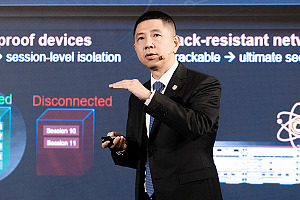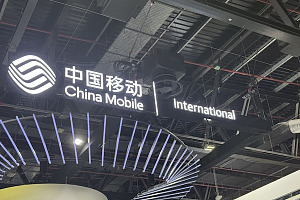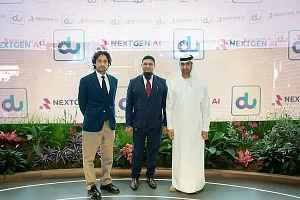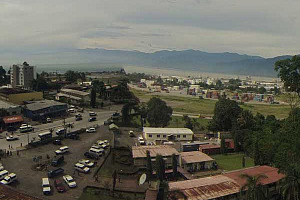Huawei Cloud has unveiled the latest update of its Chinese-language large language models (LLMs) – Pangu Models 5.5 – with major upgrades across five capabilities that it says will enable transformative applications in industry sectors such as agriculture, manufacturing and scientific research.
Revealed at last week’s Huawei Developer Conference 2025 in Dongguan, Pangu Models 5.5 features significant upgrades for capabilities including natural language processing (NLP), computer vision (CV), multi-modal, prediction, and scientific computing.
Wang Yunhu, director of Huawei Noah’s Ark Laboratory, said Pangu Models 5.5 have been upgraded to improve the user experience in long-sequence processing, low hallucinations, integrated fast and slow thinking and agents, all designed at the architecture level and tailored for Huawei’s Ascend stack.
“This lets Pangu run faster and stronger on Huawei hardware, helping our partners use them better,” said Wang.
For NLP, Huawei Cloud’s new 718B deep thinking model is an “ultra-MoE” (mixture of experts) model that has been enhanced in terms of knowledge reasoning, tool calling and mathematics. The smaller Pangu 7B embedded model – which is used heavily in enterprise, consumer apps and academic research – has been upgraded to address the pain points of long context and hallucinations.
Wang said the long-context issue was addressed with adaptive SWA and ESA tech that drastically cuts computation and KV cache for long sequences, while hallucinations were reduced by adding knowledge boundary detection and structured reasoning verification.
“This improves reasoning accuracy, proving that a smaller model can still pack a big punch,” he said.
Pangu Models 5.5 also includes Pangu DeepDiver, an open domain information agent that uses Pangu 7B to improve the efficiency and accuracy of web page search and common Q&A.
Huawei Cloud announced several new industry-specific deep thinking models under Pangu Models 5.5 covering the medical, finance, government, industrial and automotive domains that aim to accelerate intelligent transformation across those industries.
For example, the Pangu World Model – based on the Pangu Multimodal Model – generates digital physical spaces for intelligent driving and other scenarios. Huawei Cloud said Guangzhou Automobile Group (GAC Group) is using this model to achieve pixel-level mapping between videos (2D modality) and point clouds (3D modality), which enables corner cases in complex scenarios to be reproduced in minutes.
The Pangu Prediction Model features a triplet transformer unified pre-training architecture that Huawei Cloud says greatly improves prediction accuracy and provides better generalization capabilities for predictions across different industries and scenarios.
Huawei Cloud also released a 30-billion-parameter Pangu CV model based on the new MoE architecture that supports multi-dimensional, pan-vision perception, analysis, and decision-making.
Meanwhile, its Pangu Scientific Computing Model is seeing adoption across a wider range of scientific application fields, including meteorology and renewable energy.
Zhang Ping'an, executive director of Huawei and CEO of Huawei Cloud, said in his conference keynote at HDC 2025 that in recent benchmark tests, Pangu models are among the first ranked alongside Gemini, OpenAI, DeepSeek and Qwen in terms of complex reasoning, tool calling, advanced mathematics and AI programming.
Zhang added that the rankings are also a testament to the ability of the Ascend software and hardware stack to train AI models.
“All leading models in the rankings were trained on American AI chips, but Pangu can only be trained on Ascend’s software and hardware,” he said. “The rankings show that Ascend is capable of training world-class LLMs.”

























